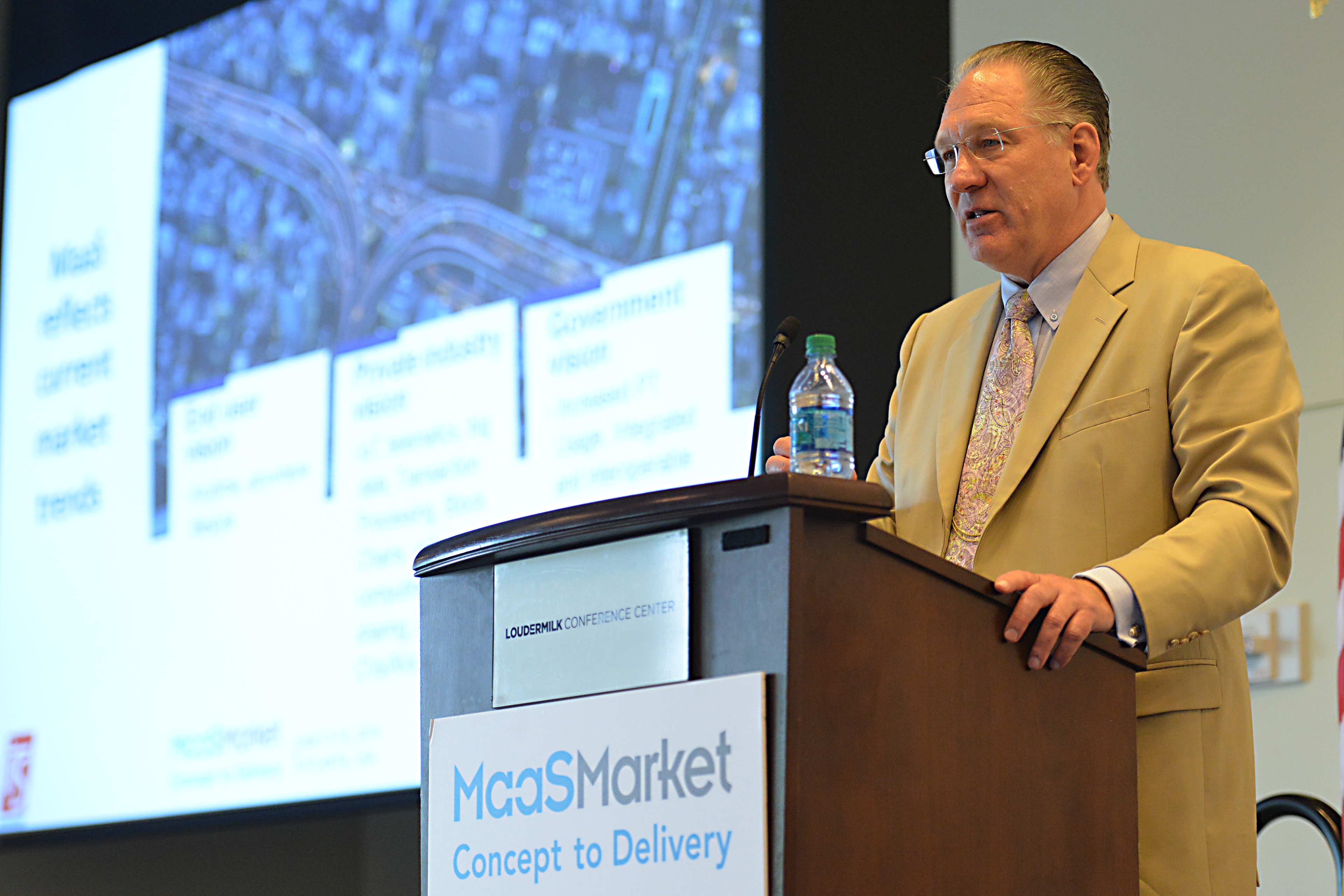
The premise of Mobility as a Service (
If that first sentence describes a simplicity, the second gives some indication of the reality. The delivery of a system that is as stress-free as possible for the user is complex and reliant upon many inter-dependencies.
MaaS is a nascent concept - and that it exists at all is the result of profound technological and societal shifts, some of which are continuing to evolve, while others are barely emerging (see box: Pillars of MaaS). To be successfully delivered (or to continue its delivery by early adopters) it is necessary to think about how to structure an approach to MaaS.
Happily, the ITS sector has a recent precedent whereby order has been conferred upon a potentially massive disruptive influence: we can mimic what has been done to describe the levels of autonomy for connected and autonomous vehicles (C/AVs) and start to think about ‘Levels of MaaS’.
The Society of Automotive Engineering’s ‘levels of autonomy’ have been adopted universally. Its approach was to choose the main variables that determine each level of maturity and to create a simple description of the differences between each step. MaaS can take a similar approach.
Despite MaaS’s infancy, concepts are being discussed and challenging business models put forward. Players are making a genuine effort to understand their roles and how MaaS fits with their strategic goals, while travellers are wondering how MaaS will affect them.
MaaS stakeholders (see Table 1) have distinctive roles in maximising the possibility of success for themselves and seamless mobility services for travellers.
| Table 1 | ||
|---|---|---|
| Player | Role | Expectations |
| Traveller | All services to be included are designed to benefit the traveller. The level of automation in every single interaction should determine the level of MaaS. | Travellers should be given all possible options given their individual preferences and the favoured option should require minimal interaction to activate services. Absolute clarity on data collected and assurance of privacy and security. |
| Private operator | Provide the mobility services as presented in a timely and reliable fashion providing continuous near real-time updates and notices. | To be able to deliver services in a competitive environment, based on well-thought commercial and marketing strategies. |
| Public transport | Provide the mobility services as presented in a timely and reliable fashion providing continuous near real-time updates and notices. Linking public service and mass transit with private operations will help create more efficient and economic outcomes. | That people will prefer public transport options as service quality improves due to less individual traffic inside cities. Increasing reliance on intelligent solutions, to optimise infrastructure investment and fleet operations. |
| Central government | Coordinate, administer, legislate and moderate mobility services to maximise the travel options available to citizens. To create a legal and administrative framework that facilitates MaaS by promoting mobility policies and supporting legislation for open standards, privacy and economic protection for citizens. | To implement mobility policies aligned with safer and more sustainable transportation modes, with mechanisms to encourage specific transport options. |
| Technology providers | Provide technological mobility solutions for the roadside, smart phone apps, wearables, onboard and central systems. These must comply with legislation and policies, and be acceptable to travellers and mobility providers. Technology providers should also help define open standards for Internet of Things (IoT) generalised presence. | To be able to sell and supply their apps, systems and experience, using the most advanced and differentiated solutions that meet both customer and operator needs in the jurisdictional framework established. |
Common themes
These new services will deliver mobility solutions for end-to-end travel that accommodate the user’s travel patterns and preferences as well as the value chains and traveller’s experience on each journey.
This will require new transportation, transit and commercial partnerships or ‘co-opetition’ and sharing of real-time data with travellers, the government and other transport suppliers while enhancing efficiency and aligning new sources of revenue. In the early stages of any transition, the services may not be dramatically different from travellers’ current travel patterns. It is only when travellers understand the options, trust the recommendations and can travel reliably in new patterns that MaaS will become a reality.
Much like the C/AV levels of autonomy, the degree of human intervention decreases as MaaS maturity increases – a simple and easily defined variable.
Paradoxically, it is unfortunate that the available mobility services are so numerous. Currently, each operator provides only part of an end-to-end journey and the traveller must switch between various websites and apps to manage each service provider individually. Access, functionality and payment options, where they exist, are limited and must be addressed individually - if at all.
By contrast, Level Six is the integration of all mobility and other digitised services. So, on any given day, the traveller’s smart home recognises their departure and shuts off lights, locks doors and activates any security services while the traveller is away.
Simultaneously, arrival time at the workplace is determined and all modes of transport fitting the traveller’s preferences are reserved, ticketed, managed and realised.
At the end of the day, the process is reversed and automatically suggests the optimum routing, ticketing and payment appropriate to the traveller’s needs. Level Five already envisages the traveller’s level of intervention as between minimal and zero and adds active artificial intelligence (AI) choices based on traveller-specific behaviour and profiling. In parallel, the anonymised data is provided to public and private operators, as well as government transportation planning services, to enable funding and planning of further improvements to services and performance.
| Table 2 | |
|---|---|
| MaaS in Europe | MaaS in the US |
| Central government-driven | Local government-driven |
| Reduce car trips (including Uber/Lyft, etc.) | Includes cars - car sharing, ride hailing, CVs / AVs |
| Unlocking economies of scale | Disruptive factors will create market change |
| Enhance public transport (PT) | Will happen with or without government |
| Push low-carbon mobility | Customer service-oriented |
| Change public behaviour | User choice will win out |
| Open, data-driven interoperability and shared information with government | Will be based on business case and user acceptability |
| Make PT 'seamless and painless' | Value of time paramount |
Pillars of MaaS
A series of complementing advances are nudging us towards a MaaS-driven future:
Transaction processing - enabling the handling of millions of transactions per second and the ability to access very large user databases with high levels of security and reliability which is vital as MaaS is dependent on individual accounts. The growth of blockchains promises even more dynamic sharing of common data while protecting private information.
Technology advances - including micro-circuitry which has miniaturised ‘super-computer’ processing power into a wearable wristband or mobile telephone (which have also evolved into handheld computers). There is also the pending move from 3G or 4G to 5G telecommunications and the use of open-system data formats to simplify data transmission and interoperability. Finally, the shift to simplified operation (reduced-instruction-set computing) makes using apps much easier, faster and more powerful.
Societal influences – such as the rise of the cashless society, along with the lowering of minimum value transactions and digital ticketing, will ease the adoption of MaaS. Also pertinent is the advent of internet merchants and secure means of buying online, and the growth of data and information on the net.
Ecosystem influences - these include: regulations and statutes stipulating open data and interoperability of both government and private sector organisations; privacy laws which protect individuals while enabling government and private transportation operators to use high-level information. These conditions foster both the rise of MaaS providers or ‘meta-operators’ and the public and individual acceptability of MaaS’s convenience and possible cost and time savings.
These ‘pillars’ must be present and of equal height if successful MaaS usage is to ensue.
Integration and reliability
With all the boundaries defined, it is possible to consider the remaining levels of MaaS and their high-level characteristics as a transition from one level to a higher degree of integration, reliability and service to the traveller (see box: Using Levels of MaaS).
Having a common framework to promote effective communications and foster smoother discussions will enable stakeholders to focus their attention on
the emerging issues and shared needs, without losing sight of the traveller’s requirements. The framework suggested above rationalises and creates an environment of acceptance and understanding from all players and helps communication and understanding of a roadmap for the implementation, transition and expansion of MaaS.
By using Levels of MaaS, it is not necessary to know the details and underpinning technologies as the framework provides a common roadmap for how stakeholders – public and private, government and technology providers — can describe their long-term goals. Everyone can have a clear vision of where they are on the path and how to transition to a fully-automated MaaS reality. It also communicates what the next level may be for planning, budgeting and expansion of services while helping travellers envisage the transition and what the next steps in the evolution may provide.
Because MaaS is still so new, it is a real challenge to provide a business model for all MaaS stakeholders. This is precisely the point at which clarity is needed: Levels of MaaS provides that clarity.
Using Levels of MaaS
Level Zero reflects the situation today, with a plethora of account-based systems where each individual transportation mode has a bespoke digitised interface and online traveller information. The traveller must surf the multiple websites, apps and interfaces to cobble together an A-to-B journey of multiple segments and modes.
The first step (Level One) will see one-to-one integration between some private services with duets of services developing joint offerings (e.g. tolling + car park, private car + ferry and car park + ride bus services).
Level Two will see increased (but still limited) integration of services at both ends of the journey. Integration of payment and ticketing across some public and private transportation services may emerge, although other public transport modes may remain sceptical and continue to stay aloof.
At Level Three unified interfaces start to appear, allowing a ‘meta-operator’ to provide a single account to be used across multiple modes of transport, enabling a traveller to find journeys through one traveller account. The meta-operator becomes the focal point and manager of multiple agreements with each operator of the independent services. The unified and agreed data exchange between all the parties provides travellers the opportunity to experience multimodal trips through suggested options presented by the meta-operator’s app.
Moving to Level Four requires that routing, ticketing and payment for all modes (private and public) are integrated. This will build on the open data and standards defined at Level Three and whose expansion will be used by all transportation providers. At this stage, the market may see multiple MaaS meta-operators competing to provide services for travellers.
By Level Five, AI presents the trip choices based on the traveller’s profile, preferences and trip patterns. Near real-time data will make or suggest ad hoc changes during journeys (to avoid delays and cancellations). Travellers’ trust in the suggested trip changes will grow as their journeys become more seamless and reliable.
Ultimately, at Level Six, MaaS will include all the above and interface with smart work spaces, smart homes, smart building and smart cities (including general services) to provide a convenient and seamless interface with the traveller’s ecosystem. While MaaS continues to focus on the traveller’s mobility, inputs and outputs of any journey will help feed and derive other dynamic interfaces.







